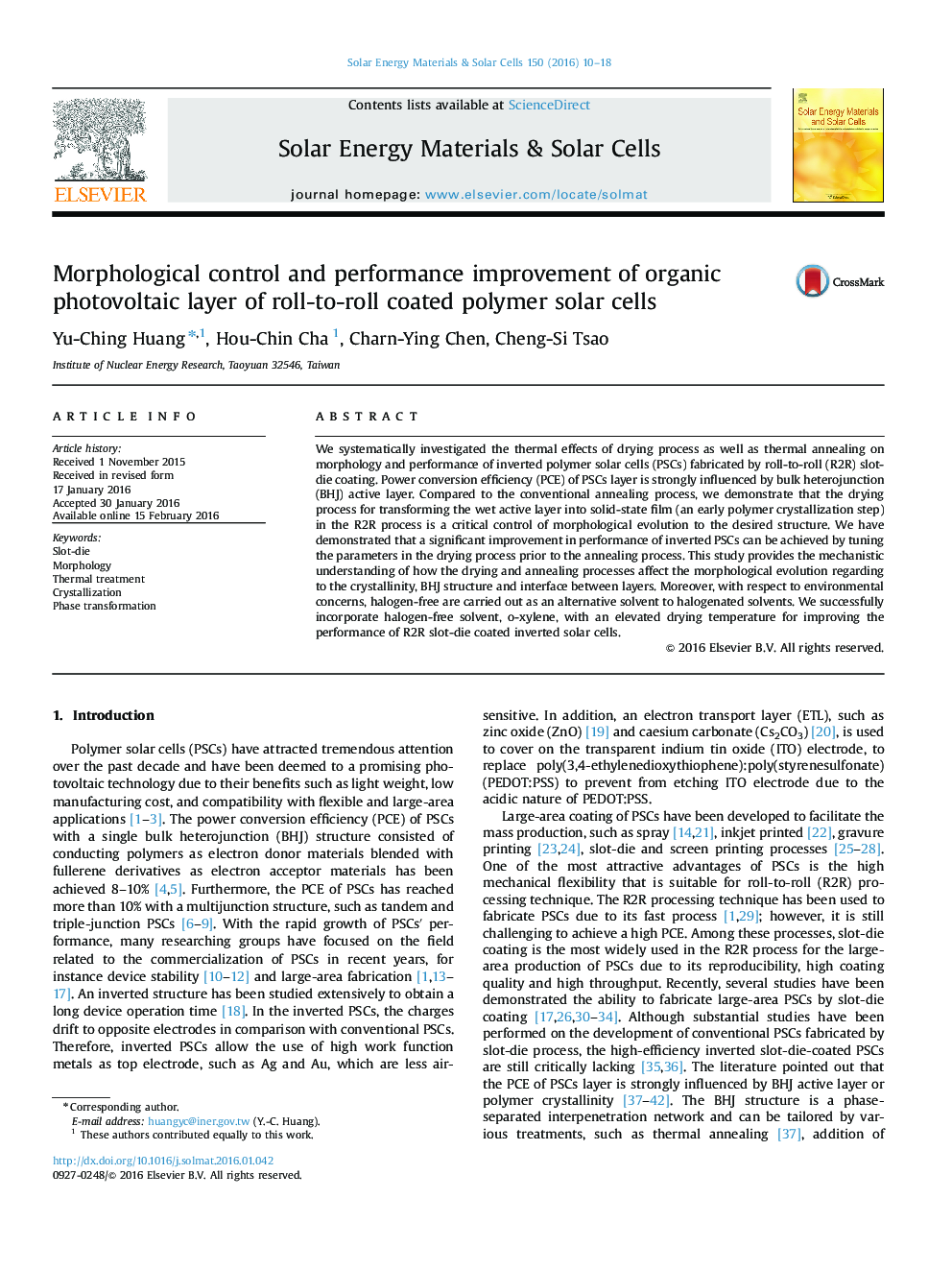| Article ID | Journal | Published Year | Pages | File Type |
|---|---|---|---|---|
| 77538 | Solar Energy Materials and Solar Cells | 2016 | 9 Pages |
•Thermal effects on the morphology and performance of R2R coated PSC.•Drying process in the R2R process is critical to morphological evolution.•PCE of R2R slot-die coated PSCs can be significantly improved from 1.2% to 2.8%.•Halogen-free solvent was successfully incorporated in R2R slot-die porcess.
We systematically investigated the thermal effects of drying process as well as thermal annealing on morphology and performance of inverted polymer solar cells (PSCs) fabricated by roll-to-roll (R2R) slot-die coating. Power conversion efficiency (PCE) of PSCs layer is strongly influenced by bulk heterojunction (BHJ) active layer. Compared to the conventional annealing process, we demonstrate that the drying process for transforming the wet active layer into solid-state film (an early polymer crystallization step) in the R2R process is a critical control of morphological evolution to the desired structure. We have demonstrated that a significant improvement in performance of inverted PSCs can be achieved by tuning the parameters in the drying process prior to the annealing process. This study provides the mechanistic understanding of how the drying and annealing processes affect the morphological evolution regarding to the crystallinity, BHJ structure and interface between layers. Moreover, with respect to environmental concerns, halogen-free are carried out as an alternative solvent to halogenated solvents. We successfully incorporate halogen-free solvent, o-xylene, with an elevated drying temperature for improving the performance of R2R slot-die coated inverted solar cells.
Graphical abstractFigure optionsDownload full-size imageDownload as PowerPoint slide
